ECOM | SEO for Your WordPress Site
This article will teach you how to apply your SEO Keyphrase plan to your website and optimize it yourself so you can rank on Google search results.
SEO Set up customers can refer to their SEO Keyphrase Plan built exclusively for their site by our digital strategists. For every core page included in the site design set up, we've included a focus keyword that will allow each page to rank on Google search engines.
Once you've identified the keyword for each page you plan to optimize follow the steps below to begin editing. Select the page and click 'Edit'.
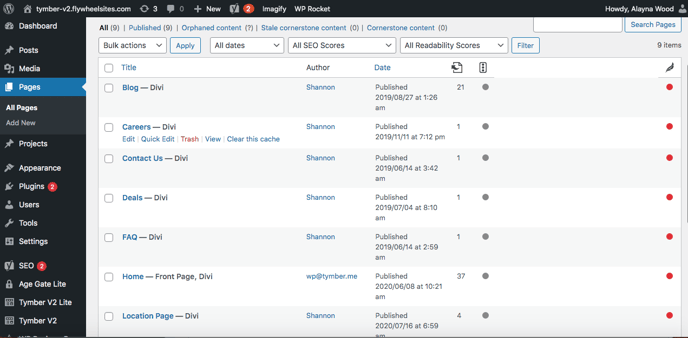
Once you are in the Page Editor, scroll down to the section that says "Yoast SEO Premium." In the Focus Keyphrase field, insert the selected keyword on your plan. For example, if editing the Deals Page, a possible keyword provided may be "Sacramento Cannabis Deals".
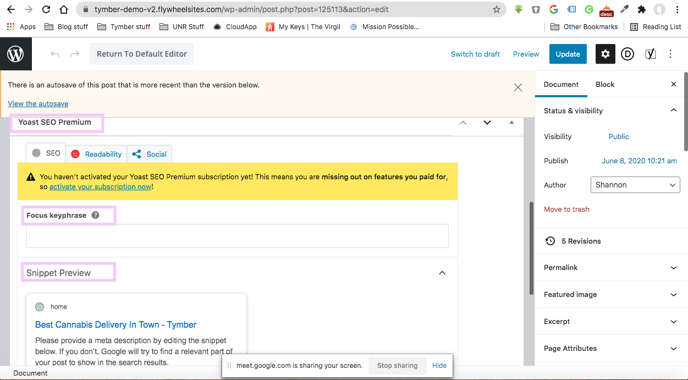
Next, you'll see the section that says "Snippet Preview" and then click "Edit Snippet". From there, you will edit the SEO Title and Meta Description. Complete the SEO Title by placing the keyword in the front and website name divided by a separator, like this: "Sacramento Cannabis Deals For Delivery | ECOM Cannabis Dispensary" (titles should be approx. 60 characters).
Finally, go down to the Meta Description section. Enter a short description consisting of 300 characters for the page created. Make sure the keyword shows up in the description. When both sections are done correctly, a green light will appear.
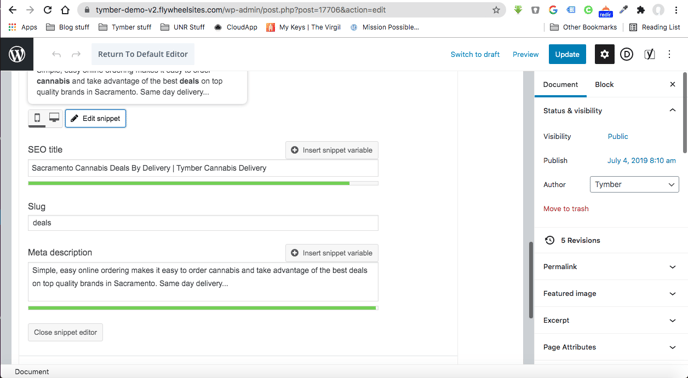
*Do not touch the slug (URL section). The slug is derived from the page title, and if the page is created and published already that means the slug (URL) is set. Changing this would result in a broken page or redirect link.
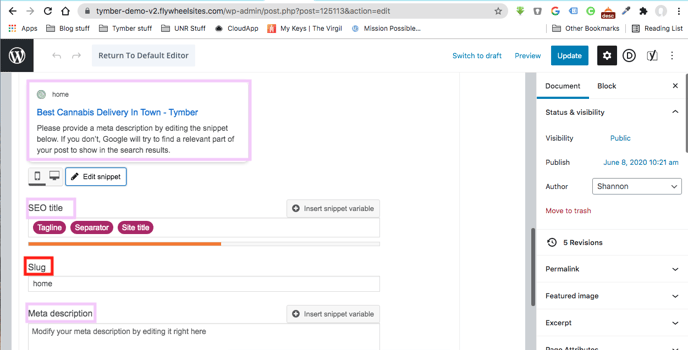
Once you publish the updates, the page is optimized on the back end. Next, you will learn how to optimize your hero and featured images so that your page will appear in the Google Image Search as well.
When uploading a hero or featured image, always know what page you will feature the particular image on. This will give you an idea of how you'll name and describe the image. Your pages can have multiple images, but only one image will be the featured/hero image and only that image will have the focus Keyword connected to it.
Find the "Media" tab on the left sidebar and click "Add New". Once your image is uploaded, follow the next steps to optimize your image. 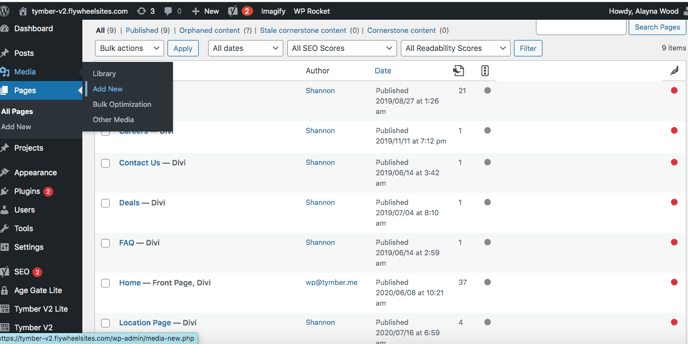
Complete the Alternative Text section with the Keyword provided from the keyphrase plan. In this case, the keyword may be "Hiking the Sierras". By adding an Alternative Text tag that matches the focus keyword, search engines are better able to recognize image content. Additionally, it will improve ADA accessibility as well
The Title section can also be completed, but it isn't as important to SEO rankings as the Alt Text. In this case, the Title is the name of the uploaded file. This is generally okay, as this only shows up on the image when you hover over it.
*Make sure that your file name doesn't have any spaces when uploaded. In some cases, if it shares a name with a webpage on your site, it may create a duplicate URL or a redirect link that looks like this: websiteurl.com/top-of-the-world-2/ (which isn't ideal).
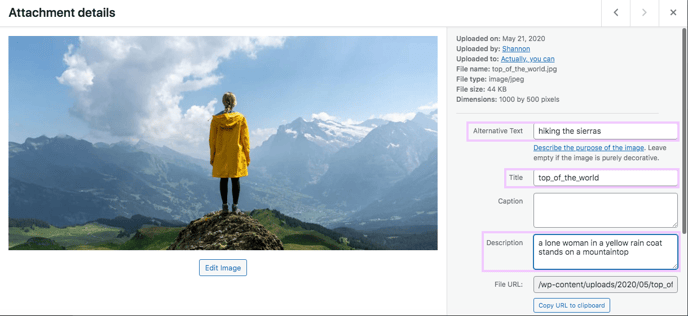 Finally, write a brief Description of the image in a full sentence. This also helps with the ADA accessibility of your site.
Finally, write a brief Description of the image in a full sentence. This also helps with the ADA accessibility of your site.
Now that the backend of your site is optimized, here are 5 tips to ensure that your on-page SEO on the front-facing side of the site is also done correctly:
Page Content Best Practices:
Here are 6 rules to live by when writing your front end content on any given core page or landing page;
- Only include ONE (1) keyword per landing page.
- Always use an H1 tag on your primary header which will include your keyword. Only include ONE H1 tag. Ex. edible delivery (keyword) → Edible Delivery in Sacramento. You can format other header sections (H2, H3, etc.) throughout the page, but only designate one as an H1.
- You can upload multiple pictures on your page, however only use the focus Keyword for the Alternative Text on the featured or hero image. This is considered your primary image. Other images can have other relevant descriptive alt tags.
- When writing the content on your page, try to have at least 300-500 words.
- Include the keyword 3-4 times for 500 words of copy and at least 1 time in a subheading (in addition to the H1 heading).
- Make sure the keyword is incorporated as naturally into the body sentences as possible. This means only including it once per section if your page has multiple sections. Just as you don't want to underutilize the keyword, you also don't want to overutilize the keyword.